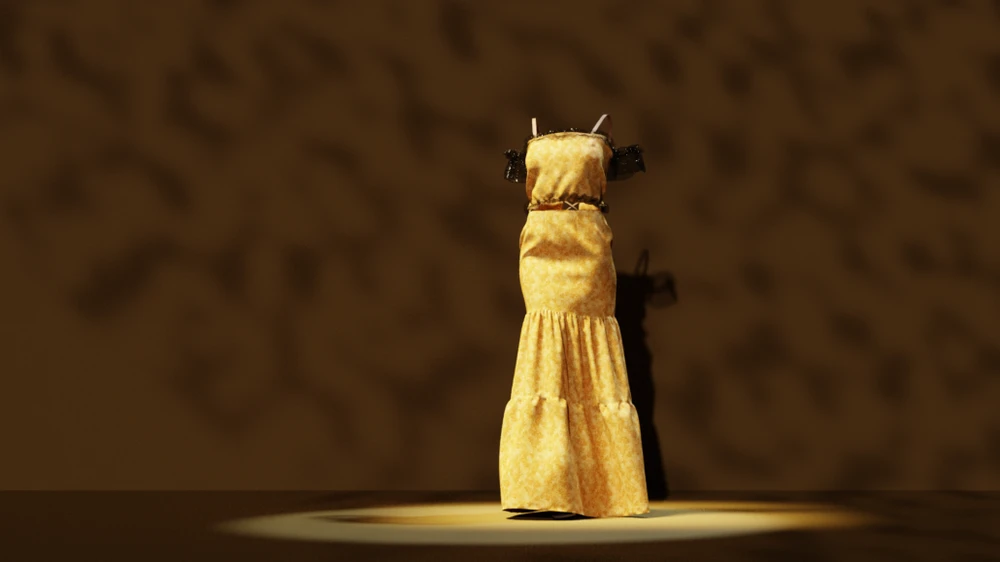Browzwear Partners with the STITCH Accelerator Program
Training & certification program to educate designers, pattern makers and product developers on using 3D design and digital workflows.
September 27, 2022

As 3D technology continues to make its way to the forefront of the apparel industry, fashion educators play a crucial role in shaping the future of fashion creatives as they continue to equip the next generation of apparel designers with the right skill set to succeed in an ever-evolving industry.
Educators like Melanie Carrico , Associate Professor at the University of North Carolina Greensboro (UNCG) , are spearheading forward-looking initiatives to bring 3D technology into the core curriculum to educate students and help them build successful careers within the new digital era.
With a vast background in fashion design and pattern making, Melanie’s knack for technology and design drove her to explore different CAD software applications and familiarize herself with designing garments using digital technology. She was first introduced to CAD software while working as a pattern maker at a uniform store, designing all kinds of uniforms for schools, construction companies, and hospitals.
After diving into the capabilities offered by various CAD software applications, she soon fell in love with the concept of digital apparel design. Several years on, with significant experience under her belt, Melanie looked to share her knowledge with aspiring fashion professionals. To make her vision a reality, Melanie took her next career steps beginning her teaching journey as an Associate Professor at The Fashion School at Kent State University, where she assisted with the implementation process of CAD software into the university’s fashion design program. After a successful ten years of teaching at Kent State University, Melanie was approached with an offer as an Associate Professor for the Consumer Apparel and Retail Studies degree at UNCG where she continues to teach.
During her time as a professor, Melanie constantly kept up to date with the advancements of different emerging technologies for apparel design as the concept slowly but surely made its way to the surface. She was eager to learn more and discover what opportunities such technology could bring to the table for apparel creatives. As Melanie continued to explore the market, she soon discovered Browzwear’s 3D apparel design software, VStitcher, and it wasn’t long before the software became second nature to her. “What I love about 3D technology, specifically VStitcher, is how it combines the design and pattern-making aspects of the process into one unified platform. Not only is it quicker and more efficient, but it helps me focus on teaching zero-waste patterns,” says Melanie.

Design by Bella Whitehead , Honors Apparel Design Student at UNCG.
“3D visualization will for sure become easier for consumers and once it does, they will be able to virtually try on garments that go beyond placing a 2D image onto a body that will represent an accurate fit on the individual. And while I don’t know much about 3D printing, I think clothes may very well be 3D printed in the near future. So the area of new materials for textiles is very exciting!” she adds .
As Melanie further developed her skills in VStitcher, she was determined to get her students on board and introduce them to the world of 3D apparel design. As she began to plan the course curriculum and consider different ways to building, Melanie worked closely with a well-known apparel brand local to North Carolina that had already implemented VStitcher. This enabled to gain first-hand insight into the organization’s 3D operations day-to-day digital workflows to gear her teaching towards real-world implementation.
Rather than conducting a one-off 3D apparel workshop, the lecturers at UNCG sought to integrate VStitcher gradually throughout the 4-year degree. The goal was to enable students to advance in 3D as they progress in their academic work.
During the first year of the degree, the students are given a one-week orientation where they are introduced to the concept of 3D apparel design and the basic features and functions of VStitcher. The second year offers a more practical approach where the students are required to complete assignments based on specific topics, including stitching, colorways, and styling in 3D. In the third year, the students take their practical knowledge of the software to start developing patterns for their garments from scratch. Finally, when it comes to their fourth year of studies, the students are tasked with creating a digital collection in VStitcher from ideation through to construction. They are required to produce both a digital and physical sample to be assessed by Dr. Haeun (Grace) Bang, Assistant Professor at UNCG.
After five successful years, VStitcher continues to be a core part of the Consumer Apparel and Retail Studies curriculum at the university, enabling students to launch into their careers with the advantage of being fully equipped to take on the growing demand for digital talent within the industry.
“I really enjoyed using the VStitcher software. It was remarkable to see how different fabrics would drape on the body, and be able to easily translate digital patterns to physical ones. As a designer, it gives me the freedom to be creative, go beyond boundaries, and take risks,” says Bella Whitehead , a student at the University of North Carolina Greensboro.
“I am highly optimistic about the future of technology within the apparel industry. I believe it will allow designers to create garments with a more accurate fit and help brands expand their sizes to be more inclusive. Using 3D imagery and digital rendering can also help reduce waste throughout the design and construction process, a step in the right direction for an industry which consistently needs more sustainable innovation,” she adds.
Another talented student, Leah Cockerham , shared her positive experience working with the software, “VStitcher helped me to become more efficient with my pattern corrections. I could release fabric in areas where there might have been tension, and then I could reconfirm by looking at the colors on the pressure map. I was able to use an avatar with precise measurements that I needed.”

Design by Tabitha Goodman , Honors Apparel Design Student at UNCG.
Melanie believes that by educating students in 3D apparel design, they will always be able to stay ahead of the game once they start looking for jobs for all kinds of opportunities within the apparel industry. “3D is where the apparel industry is going, and if students are not being exposed in their Education, they are behind when they graduate,” says Melanie.
For Melanie, it’s not just about educating fashion design students or those who major in apparel, but it goes as far as teaching students that are within the retail field and other similar professions, “3D is even important for retail students to get a taste of and understand the capabilities if they work in a buyer’s role as they can buy from a virtual sample instead of having a physical sample. 3D helps develop the student’s future within the apparel industry in all aspects,” she adds.
“ I am hopeful that 3D visualization will become easier for consumers. Eventually, they will be able to virtually try on garments that go beyond placing a 2D image onto a body that will represent an accurate fit on the individual. And while I don’t know much about 3D printing, I think clothes may very well be 3D printed in the near future . So, the area of new materials for textiles is very exciting! ”

Training & certification program to educate designers, pattern makers and product developers on using 3D design and digital workflows.
WIZO Haifa Academy of Design and Education, recently incorporated VStitcher into their third-year Natural Resources course.
3D CAD fashion design software is essential to a digital workflow. Modern fashion CAD software shortens the time for designers to create new concepts.